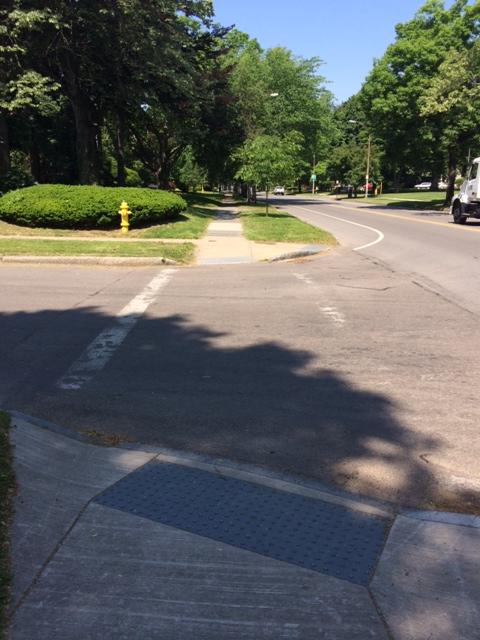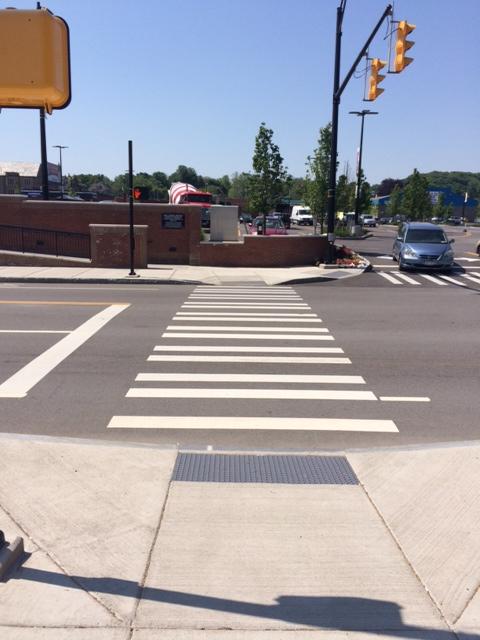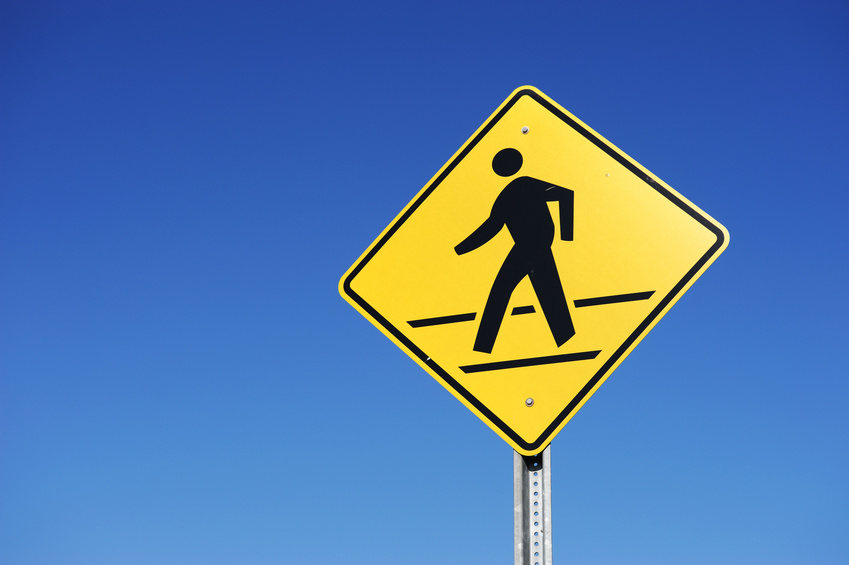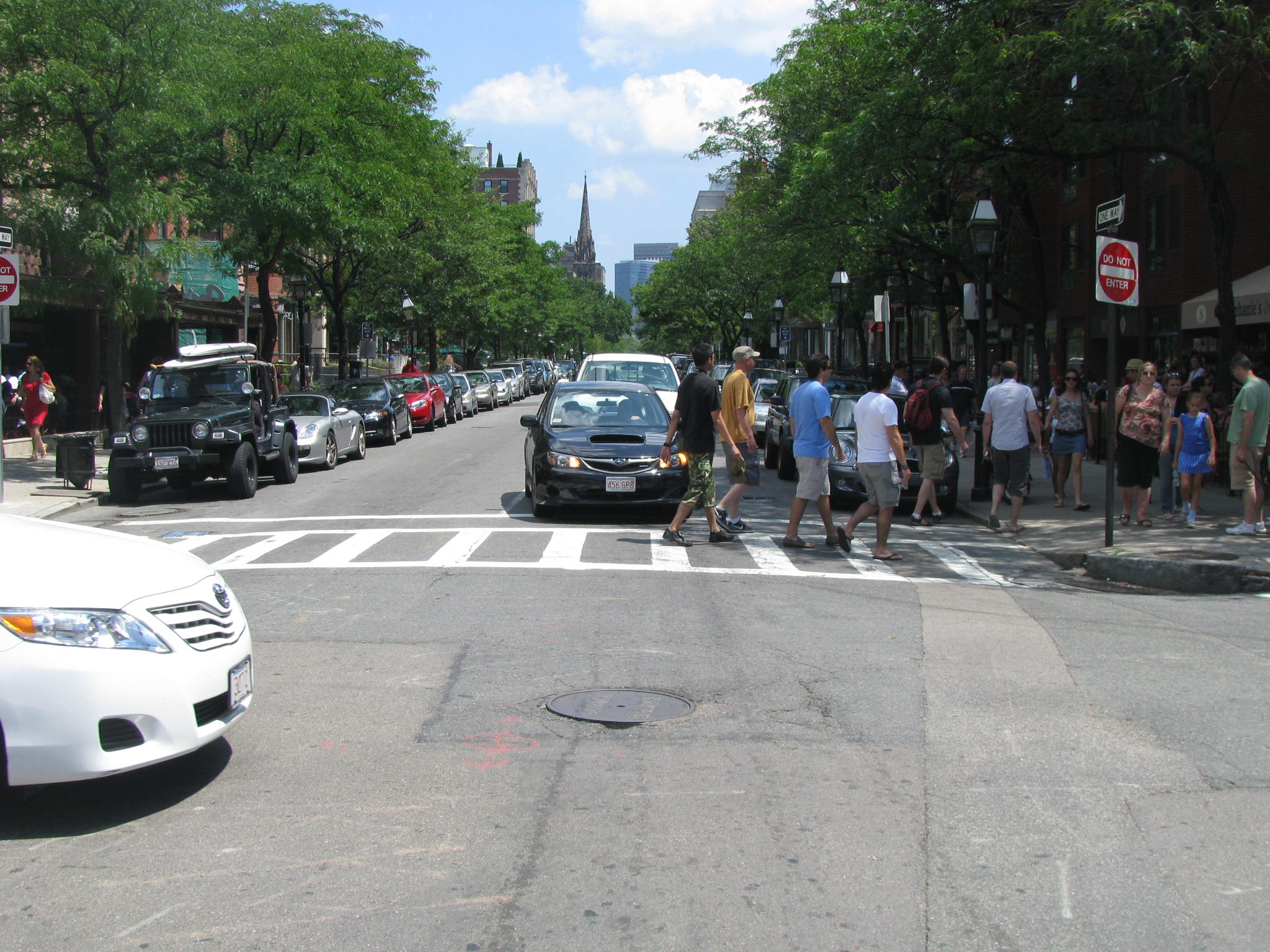Since moving to Rochester, I’ve walked everywhere in the city. And I’ve noticed that not all pedestrian crossings are created equal. The crosswalks in my neighborhood, for example, are those parallel lines (called “standard” or “transverse”). They are in such faded condition that they are hardly visible.
The photo above shows the crosswalk at the end of my block, where loads of walkers and runners cross every day, especially in the evening. The evening is when the traffic is the heaviest, as drivers use East Ave to commute home. And this is where we have seen several cyclist and pedestrians hit (and countless near misses) by turning cars.
The statistics show that most pedestrians crashes occur at intersections where drivers are turning, which makes sense. As a driver, you have lots to watch for when turning — the cars behind you, the oncoming cars, the right spacing to make your turn and anyone crossing the intersection on a bike or by foot. But it is important to note that when a driver is turning at an intersection and someone is walking (or running) along the sidewalk, the person on foot has the right of way. This is easier to remember when you are at an intersection with a traffic light/walking signal. But most residential side streets don’t have lights, so it gets hairy. And drivers forget to watch for pedestrians. Pedestrians have a responsibility, of course, to pay attention and make their best assessment on whether drivers see them or not. Often, they are already mid-street when a car decides to turn. Just like a driver waiting to turn has to yield to drivers who are going straight, those pedestrians walking straight across the intersection along the sidewalk have the right of way.
So I wondered if more noticeable crosswalks would help on these streets? Walk near East Ave Wegmans and Harris Communications and you’ll see beautiful and bold striped crosswalks (called “continental” and “bar pairs”). But most other crosswalks have the old faded standard parallel lines. Even in highly crossed intersections like Culver and East, where a daily battle between pedestrians crossing with the light and turning motorists occurs. (I don’t expect striped crosswalks at every residential street; that would be too costly. But I would expect them at intersections with high volumes of traffic.)
The US Department of Transportation conducted a study a few years ago that concluded that drivers could see the continental (striped) marking at twice the distance compared to those standard parallel lines. At 30mph, that means 8 seconds more time to prepare and react. That’s a pretty good case for using striped versus parallel lines.
USDOT recommends that stripey crosswalks be the default for all crossings not controlled by signals or stop signs, making exceptions to use transverse lines when lower speeds (like on residential streets) are present.
So why don’t we see more stripes around Rochester? A big reason is the mix of county, state and locally-owned roads. Each has its own standard, so a village can’t have its DPW crews just paint stripes on a crosswalk on a state-owned road without getting a big stop work order placed on its crews. But maybe if all the walkable neighborhoods in our area keep lobbying for and/or stubbornly keep painting stripes over and over again, they will become the norm. (I’m ready. Who has some reflective paint?)
Making crosswalks more noticeable (especially those that aren’t at a traffic signal) gives drivers more reaction time. Making drivers pay attention to crosswalks is only part of the overall puzzle of making pedestrians safer in Rochester, but it’s an important one.
Whether you walk, bike or drive a lot, would you like to see more stripes in Rochester?








No Comment